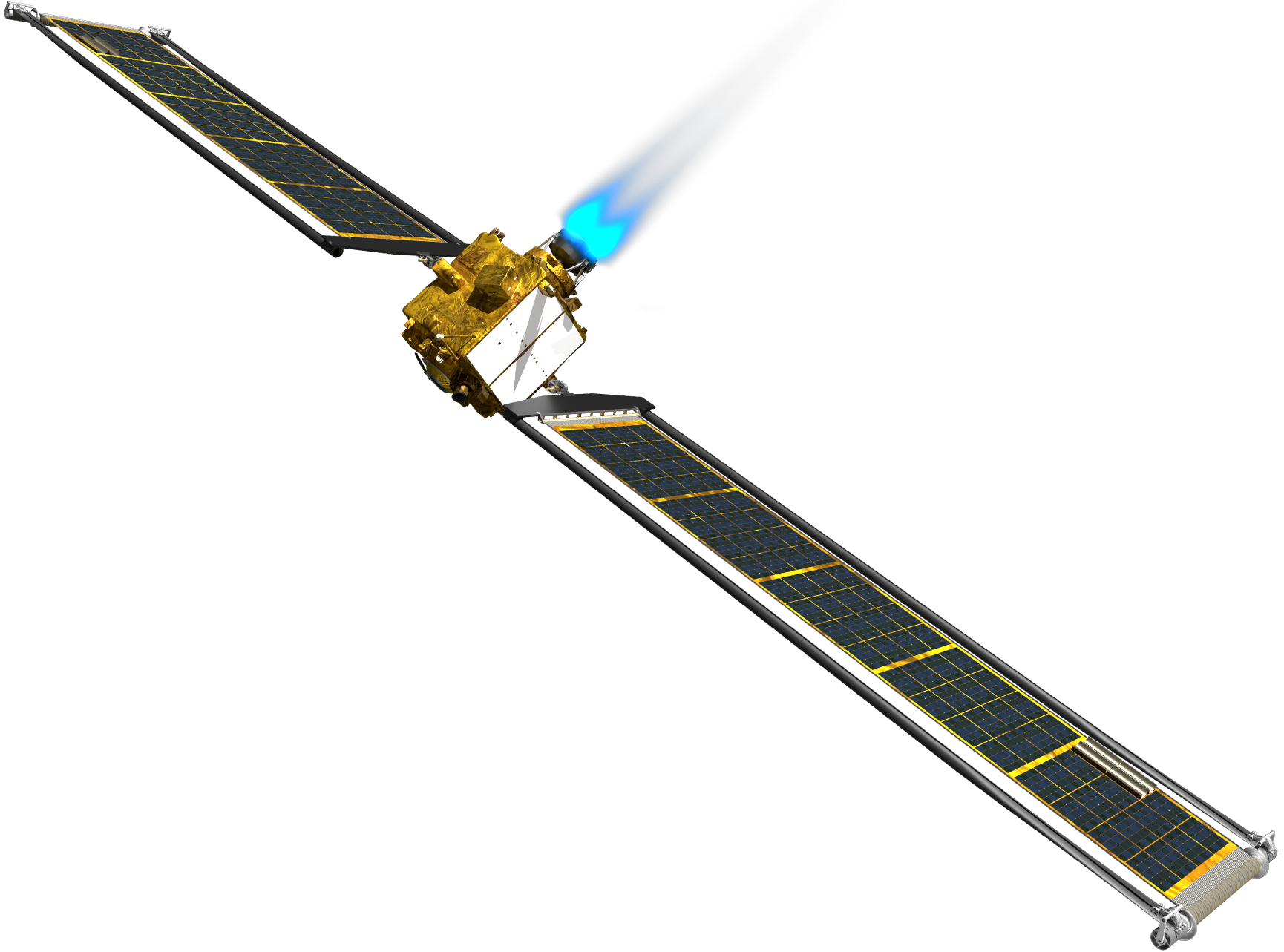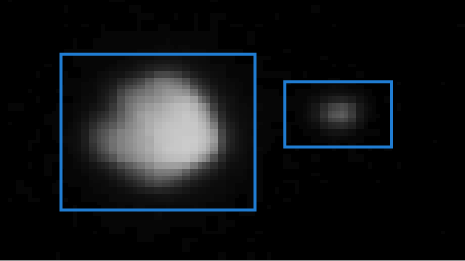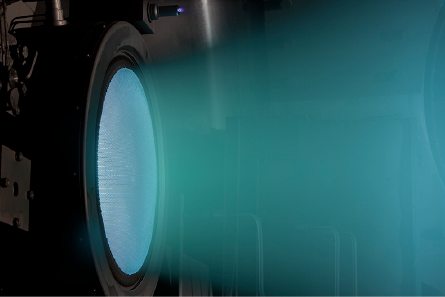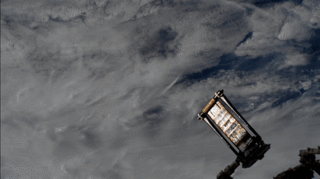Impactor Spacecraft

DART Impactor
DART is a low-cost spacecraft. The main structure of the spacecraft is a box with dimensions of roughly 1.2 × 1.3 × 1.3 meters (3.9 × 4.3 × 4.3 feet), from which other structures extend to result in measurements of roughly 1.8 meters (5.9 feet) in width, 1.9 meters (6.2 feet) in length, and 2.6 meters (8.5 feet) in height. The spacecraft has two very large solar arrays that when fully deployed are each 8.5 meters (27.9 feet) long. DART navigated to crash itself into Dimorphos at a speed of approximately 6.1 kilometers (3.8 miles) per second. The total mass of the DART spacecraft was approximately 1,345 pounds (610 kilograms) at launch and roughly 1280 pounds (580 kilograms) at impact. DART carries both hydrazine propellant (about 110 pounds, or 50 kilograms) for spacecraft maneuvers and attitude control, and xenon (about 130 pounds, or 60 kilograms) to operate the ion propulsion technology demonstration engine.


